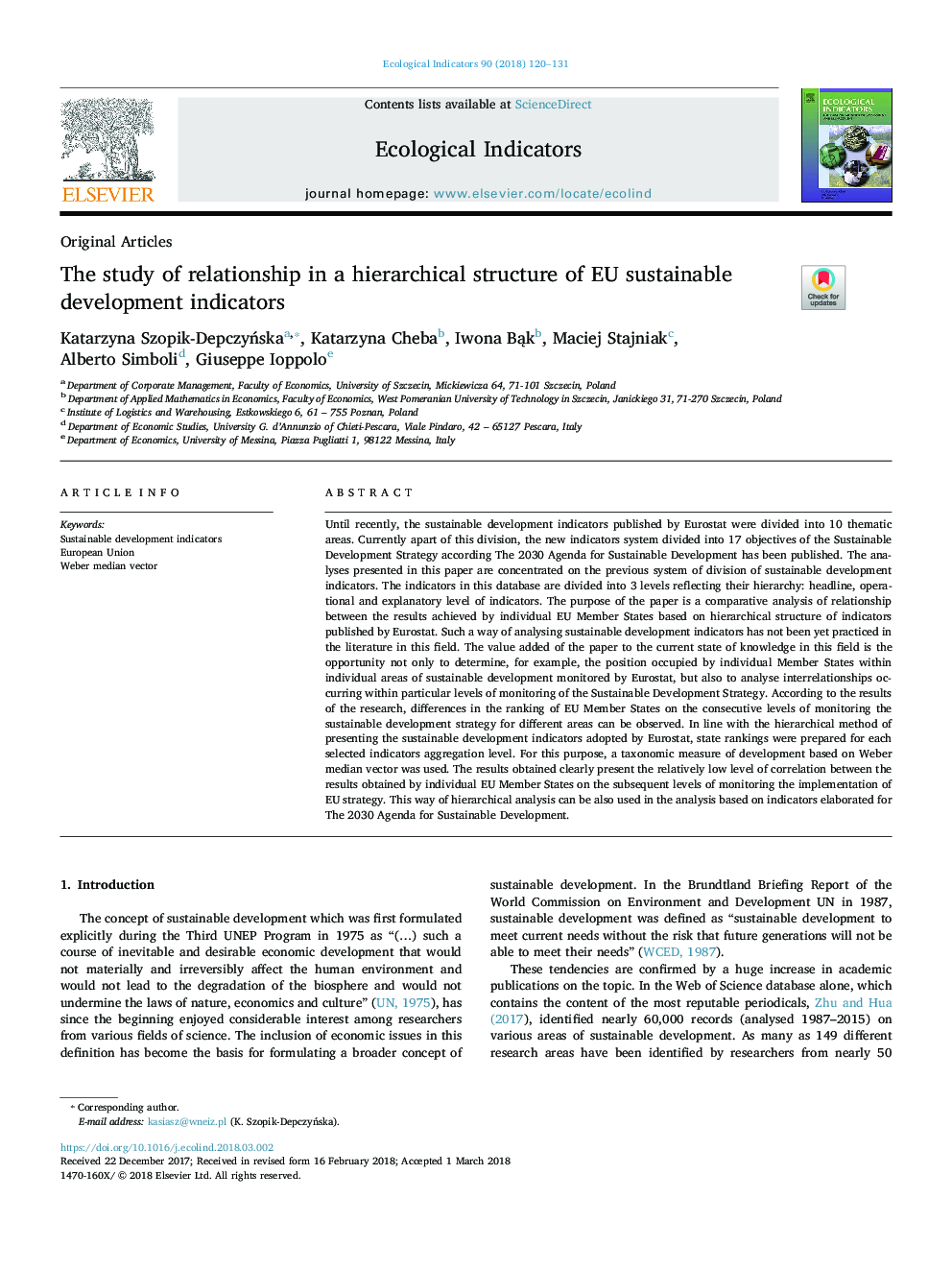| Article ID | Journal | Published Year | Pages | File Type |
|---|---|---|---|---|
| 8845371 | Ecological Indicators | 2018 | 12 Pages |
Abstract
Until recently, the sustainable development indicators published by Eurostat were divided into 10 thematic areas. Currently apart of this division, the new indicators system divided into 17 objectives of the Sustainable Development Strategy according The 2030 Agenda for Sustainable Development has been published. The analyses presented in this paper are concentrated on the previous system of division of sustainable development indicators. The indicators in this database are divided into 3 levels reflecting their hierarchy: headline, operational and explanatory level of indicators. The purpose of the paper is a comparative analysis of relationship between the results achieved by individual EU Member States based on hierarchical structure of indicators published by Eurostat. Such a way of analysing sustainable development indicators has not been yet practiced in the literature in this field. The value added of the paper to the current state of knowledge in this field is the opportunity not only to determine, for example, the position occupied by individual Member States within individual areas of sustainable development monitored by Eurostat, but also to analyse interrelationships occurring within particular levels of monitoring of the Sustainable Development Strategy. According to the results of the research, differences in the ranking of EU Member States on the consecutive levels of monitoring the sustainable development strategy for different areas can be observed. In line with the hierarchical method of presenting the sustainable development indicators adopted by Eurostat, state rankings were prepared for each selected indicators aggregation level. For this purpose, a taxonomic measure of development based on Weber median vector was used. The results obtained clearly present the relatively low level of correlation between the results obtained by individual EU Member States on the subsequent levels of monitoring the implementation of EU strategy. This way of hierarchical analysis can be also used in the analysis based on indicators elaborated for The 2030 Agenda for Sustainable Development.
Related Topics
Life Sciences
Agricultural and Biological Sciences
Ecology, Evolution, Behavior and Systematics
Authors
Katarzyna Szopik-DepczyÅska, Katarzyna Cheba, Iwona BÄ
k, Maciej Stajniak, Alberto Simboli, Giuseppe Ioppolo,
